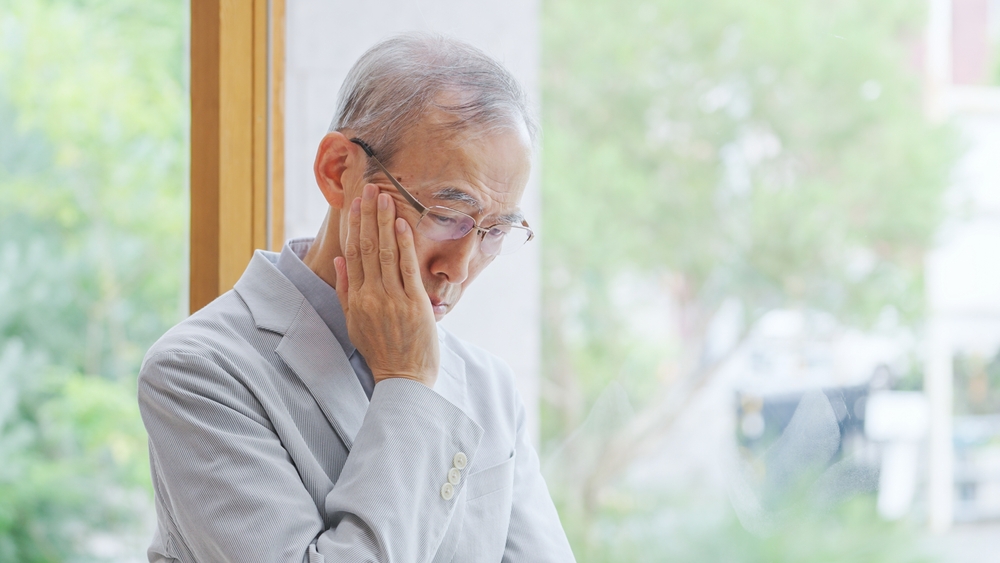According to the Ministry of Internal Affairs and Communications, the number of children under 15 was 13.66 million as of April 1, 2025. This figure is down 350,000 from the previous year, which kept declining for 44 consecutive years. It is the first time since 1950 that the number of children has fallen below 14 million, the lowest number since 1950 when comparable data was first collected. The percentage of children in the total population also fell to a new low of 11.1%, down 0.2 percentage points. Once again, attention was drawn to the ongoing decline in birth rates. Now Japan is stepping into a super-ageing society.
Once celebrated for its post-war economic miracle, Japan is now facing an unprecedented demographic crisis. With a rapidly ageing population and a plummeting birth rate, Japan stands at the forefront of a global trend many other nations may eventually face. This blog explores Japan’s demographic dilemma’s roots, realities, and repercussions, highlighting the implications of a shrinking youth population and the rise of a super-aged society.
Understanding Japan’s Demographic Shift
As of 2025, more than 29% of Japan’s population is 65 or older, making it one of the oldest societies in the world. Simultaneously, the number of children under 15 has reached record lows. According to Japan’s Ministry of Internal Affairs and Communications, the child population dropped to just 14.6 million in 2024, continuing a 43-year downward trend.
This demographic transformation can be traced back to several interconnected factors: fertility Decline, delayed marriages and childbearing, urbanisation, and work culture.
- Fertility Decline: Japan’s fertility rate remains significantly below the replacement level of 2.1. In 2023, it stood at 1.20 children per woman (http://bit.ly/44JxR8p: NHK news website). Regarding the fertility decline, many women are now reluctant to give birth due to the significant impact it can have on their careers, often facing stalled professional growth or job insecurity during and after maternity leave. Additionally, the overwhelming burden of managing child-rearing (solo-parenting) and household chores alone, often called a ‘one-operation’ task, can lead to physical and emotional exhaustion, making the prospect of motherhood even more daunting. When a wife has work outside, she must handle work, child-rearing, and house chores alone. This problem is particularly common among wives whose husbands are too busy to take care of the housework and childcare.
- Delayed Marriages and Childbearing: Economic insecurity, changing gender roles, and cultural shifts have led to delayed marriages and fewer births.
- Urbanisation: Rising living and housing costs in urban areas make child-rearing increasingly burdensome.
- Work Culture: Japan’s intense work culture leaves little room for family life, particularly for women who often face the pressure of choosing between career and children.

Super-Ageing Society: Definition and Dynamics
A society is classified as “super-aged” when 20% of its population is over 65. Japan surpassed this threshold in 2005 (https://www.stat.go.jp/data/topics/topi1321.html) and has continued to age at an accelerating pace. This shift is not merely about numbers but has profound social, economic, and political implications.
Super-Ageing Society: Definition and Dynamics
A society is classified as “super-aged” when 20% of its population is over 65. Japan surpassed this threshold in 2005 (https://www.stat.go.jp/data/topics/topi1321.html) and has continued to age at an accelerating pace. This shift is not merely about numbers but has profound social, economic, and political implications.

Emerging Issues in a Super-Ageing Society
Japan is grappling with several critical challenges as it transitions into a super-ageing society. One of the most pressing issues is the shrinkage of the labour force. The country faces a severe labour shortage with fewer young people entering the workforce. This declining working-age population not only threatens overall economic productivity but also places immense pressure on the remaining workforce to maintain economic stability and growth.
In tandem with workforce challenges, Japan’s economic structure is under strain. The social security system—particularly pensions and healthcare—is buckling under the weight of a growing retiree population. A smaller working demographic is now responsible for supporting increasing elderly citizens, leading to rising fiscal deficits and potential long-term economic stagnation.
The healthcare system is also feeling the impact of the ageing population. Demand for elderly care services is soaring, overwhelming hospitals, nursing homes, and in-home care providers. A shortage of caregivers has compounded this issue, placing an additional burden on families, particularly women, who often leave their jobs to care for ageing relatives. To manage increasing demand for medical and long-term care, the government is expanding home-based care services, community-based integrated care systems, and preventive health programs. The goal is to help elderly individuals live independently for as long as possible.
Another critical concern is rural depopulation. Young people are increasingly leaving rural areas searching for better opportunities in urban centres. As a result, many rural towns are experiencing near-total depopulation, turning once-thriving villages into ghost towns and collapsing local economies.
Social issues have also emerged, particularly loneliness and isolation among the elderly. Many older adults live alone, and without sufficient social support, incidents of isolation are on the rise. This has given rise to the tragic phenomenon of kodokushi, or “lonely deaths,” where individuals pass away unnoticed, sometimes remaining undiscovered for extended periods.

Government Responses and Policy Measures
The Japanese government has implemented several policy measures in response to these demographic challenges. Pro-natalist policies have been introduced to encourage higher birth rates, including child allowances, free preschool education, and extended parental leave. However, these initiatives have had limited success in reversing the declining birthrate.
To better support families, the government is pursuing workplace reforms to improve work-life balance. These include reducing overtime, introducing flexible work hours, and promoting telecommuting to help working mothers manage career and childcare responsibilities.
Recognising the potential of older citizens, Japan is promoting employment for the elderly. Many companies are updating their retirement policies to retain senior workers in part-time or consulting roles, encouraging them to remain active in the labour force beyond traditional retirement age.
Japan also invests in technological innovations to address labour shortages and support elderly care. The use of robotics and artificial intelligence is on the rise, with robotic caregivers, autonomous vehicles, and AI-driven medical diagnostics becoming more prevalent.
Cultural and Societal Adaptations
The demographic shift is also prompting broader changes in Japanese society. The traditional multi-generational household, once a staple of Japanese family life, is becoming less common. In its place, new forms of communal living and alternative eldercare models are emerging to support independent living for seniors.
Gender roles, too, are transforming. As economic necessity draws more women into the workforce, societal norms gradually adapt to support their dual roles as professionals and caregivers. However, progress remains uneven, and further cultural change is needed to achieve full gender equality in both the home and workplace.
Urban planning is being reimagined to create more age-friendly environments. Cities are redesigning infrastructure to be more accessible, improving public transportation, and establishing community hubs where older adults can gather and socialise. These efforts aim to reduce isolation and promote active ageing.

Barrier-free Hotels
Hotels, especially in major cities and tourist areas, are equipped with barrier-free facilities. This is part of the country’s broader effort to become more accessible for its ageing population and elderly travellers.
Barrier-free features in hotels may include:
- Wheelchair-accessible entrances, elevators, and rooms
- Bathrooms with grab bars, roll-in showers, and emergency call buttons
- Braille signage and visual alarms for the hearing impaired
- Lowered counters and automated doors
- Staff trained in assisting elderly and disabled guests
Hotels certified under the “Universal Design” concept are particularly proactive in offering accessible accommodations. These features have become more common ahead of global events like the Tokyo 2020 Olympics and Paralympics, which pushed accessibility standards nationwide.
The following hotels are some of the accessible hotels in Japan:
1. Hotel Metropolitan Tokyo Ikebukuro (Tokyo) https://tokyo-ikebukuro.hotel-metropolitan.com/
- Located near Ikebukuro Station.
- Offers barrier-free rooms with wide doorways, roll-in showers, and emergency buttons.
- Close to public transport and shopping.
2. Keio Plaza Hotel (Tokyo, Shinjuku) https://www.keioplaza.com/
- Offers several “universal rooms” designed for wheelchair users.
- Features include low beds, emergency buttons, and accessible bathrooms.
- Staff is trained to assist elderly and disabled guests.
3. Hotel Granvia Kyoto (Kyoto) https://www.granviakyoto.com/
- Directly connected to Kyoto Station, eliminating the need for taxis or stairs.
- Offers accessible rooms with wide corridors and grab bars.
- Great base for accessible day trips.
4. Swissôtel Nankai Osaka (Osaka) https://swissotelnankaiosaka.com/
- Located above Namba Station, very convenient for transport.
- Barrier-free rooms with step-free showers and adjustable beds.
- Close to accessible shopping districts and restaurants.
5. InterContinental Yokohama Grand (Kanagawa) https://www.icyokohama-grand.com/en/
- Designed with elderly and wheelchair users in mind.
- Located in the Minato Mirai area, which has wide sidewalks and ramps.
- Rooms include large bathrooms and staff assistance on request.
6. Hotel Nikko Fukuoka (Fukuoka) https://www.hotelnikko-fukuoka.com/en/
- Offers barrier-free accommodations.
- Located near Hakata Station with easy access to the airport and public transport.
- Known for staff hospitality and comfort for elderly travellers.
If you are looking for such hotels in different cities, please contact us via Messenger, the Contact form, or email.
Future Outlook and Global Lessons
Japan’s demographic landscape offers a glimpse into the future that many industrialized nations may soon face. Countries like South Korea, Italy, Germany, and China are already beginning to experience similar population trends. Japan’s proactive, though sometimes insufficient, policy measures serve as both a warning and a guide.
The path ahead remains complex. Even with decisive action, the effects of demographic momentum mean that population decline may continue for decades before stabilizing. The challenge goes beyond policy—it calls for a reimagining of social structures, economic priorities, and cultural values.
What Japan ultimately decides will not only shape its national future but also provide valuable lessons for the world. Its journey reflects the broader human quest to balance longevity, equity, and sustainability in an era of profound demographic transformation.
Conclusion
Japan’s falling birth rate and super-ageing population represent more than a statistical anomaly; they are transformative forces reshaping the fabric of society. As the nation grapples with the implications of this shift, its policies, technologies, and cultural adaptations will serve as a global case study. The urgency is apparent: Japan risks becoming a land of the old without bold and sustained action, with too few young to sustain its future.
Call to Action
For Japan — and the world — addressing the challenges of an ageing population and shrinking youth demographic requires integrated efforts across government, industry, and society. It is time to invest not only in policies but also in people, fostering a future where age does not hinder opportunity, and where every generation has a role to play in building a resilient society.

